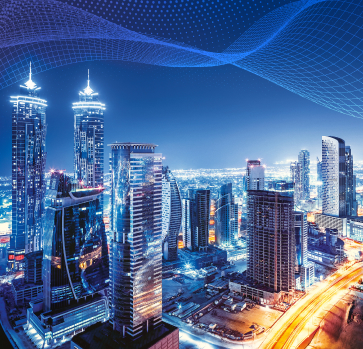Making the metaverse feel real: the key characteristics and challenges
The term "metaverse” has been around since 1992, when Neal Stephenson introduced it in his novel Snow Crash. However, it hasn’t been until relatively recently that several required technologies are simultaneously converging and accelerating at an exponential rate that could make the metaverse vision a reality.
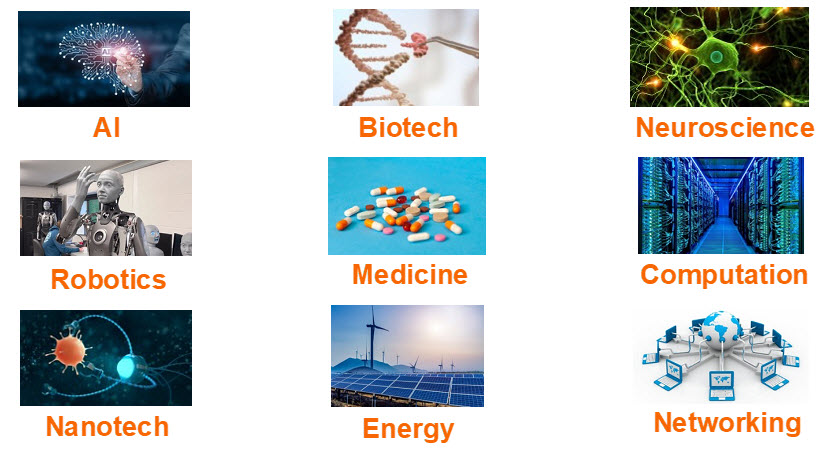
Key characteristics of the metaverse
To be fully immersed in the metaverse, we must have interactive tools that are far more advanced than what’s available with today’s internet:
- Multi-sensory interaction. The sensation of believing that “you’re really there” encompasses our entire range of sensory-based perception. Our eyesight can be fooled quite easily by the ability to generate photo-realistic environments across our field of vision. Spatial audio is designed to allow us to perceive the distance and direction of sound. Haptic feedback gives us a physical sensation of touch. Simulating scent and smell exists today (even with some humorous attempts in the past), and the concepts of simulating taste still have a way to go. Finally, beyond the five human senses is the ability to reproduce chemically induced sensations, such as the effects alcohol or chocolate have on how you feel.
- Artificial Intelligence. The systems that comprise the metaverse must be able to understand context and be able to interact with people in an intuitive way. This will allow the metaverse to fill in the gaps and anticipate actions to create an immersive environment.
- Spatial computing. In an environment as vast as we’re imagining, and one that remains persistent even when we’re not there, some mechanism needs to keep track of where everything is and how it relates to one another.
- Codeless programming. Web3 emphasizes the concept of creation and ownership. However, if everyone in the metaverse has the desire to create, then an easy way to do so must exist. There’s only a limited number of people in the world with the programming skills to create content with just a keyboard and a computer. The concept of codeless programming (think drag-and-drop creation, like Minecraft) must become mainstream at a cost appealing to almost everyone.
The communications aspect of enabling these characteristics
One way to visualize the metaverse is a platform supporting a myriad of innovative applications. The platform relies on extended reality (or XR, the combination of virtual, augmented, and mixed reality), multi-sensory interaction, Web3 “enabling technologies”, and the same infrastructure of today’s internet—cloud and web required infrastructure.
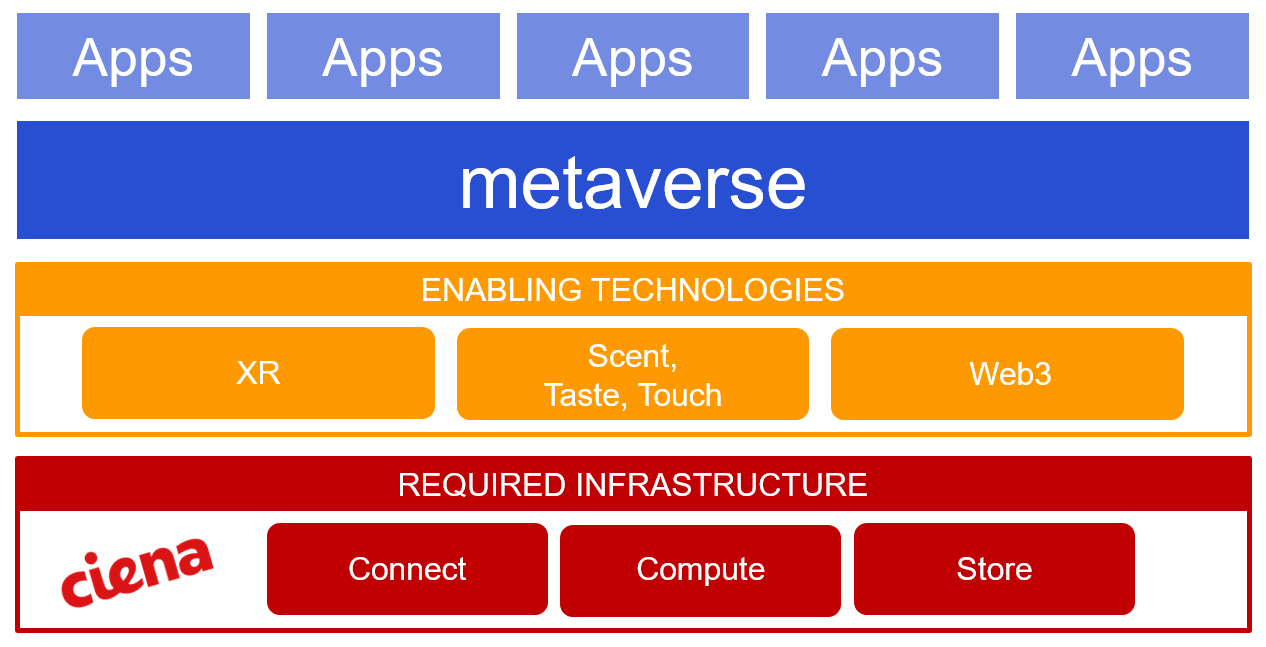
The metaverse and its applications will place a tremendous amount of stress on the network. To enable a truly immersive and interactive experience, XR and photorealistic 3D rendering graphics engines will require massive amounts of bandwidth, coupled with huge amounts of compute and storage accessible at ultra-low latencies.
Another way to visualize the metaverse is not just existing apart from the physical world, but rather it being the translation and interaction between the physical world to the digital world and virtual world. The future of telecommunications may be about allowing these three worlds to work together seamlessly, instantly, securely, and reliably. A level of intelligence that understands intent will likely be necessary for this to happen. The inclusion of the digital and virtual worlds will work to augment and enhance the physical world.
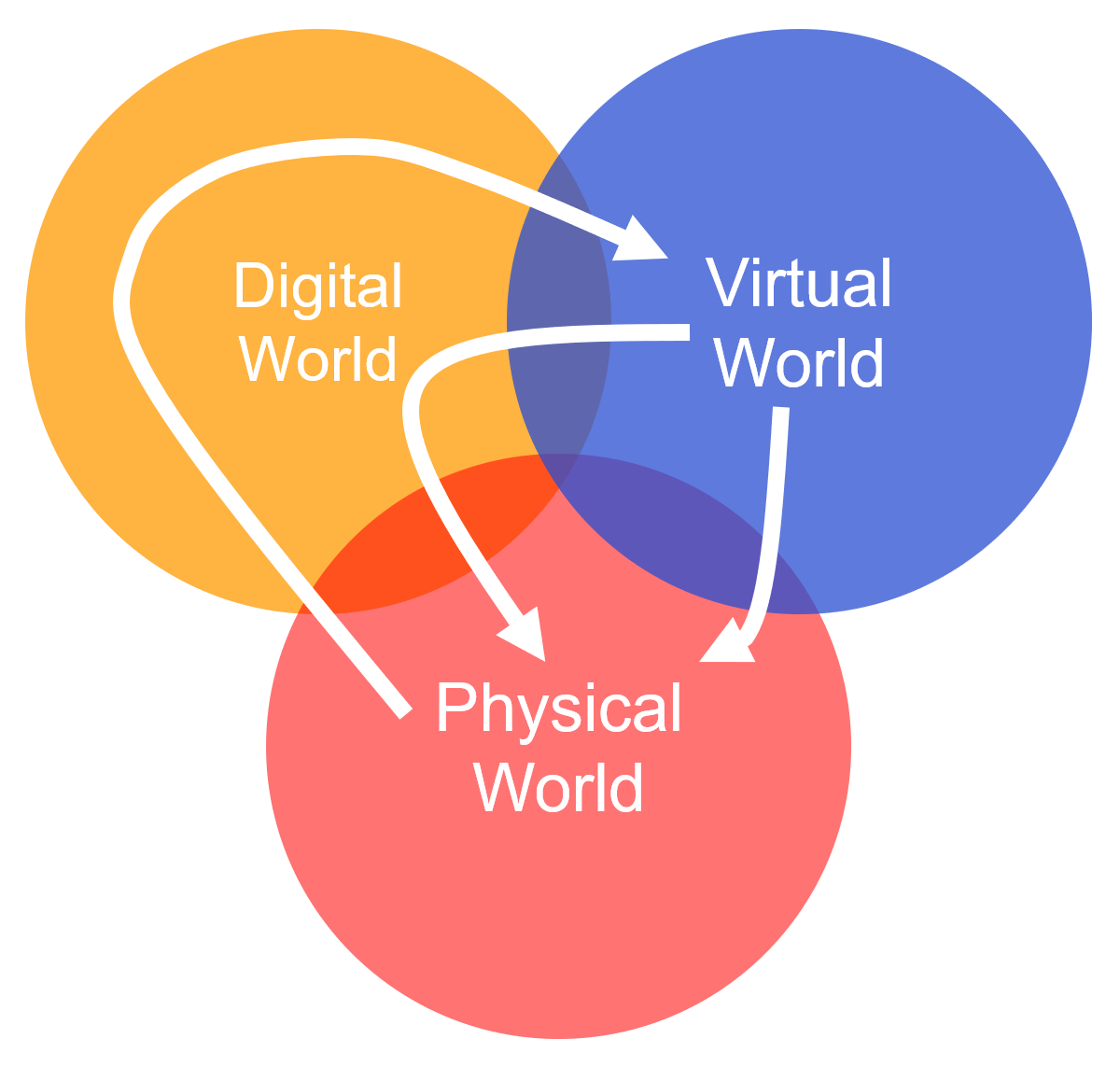
Key challenges
The metaverse will not be without its challenges, as there are many areas needing collaboration and agreement from the larger community to be successful:
- Definition: There is no one, common, accepted definition of the metaverse. The IEEE Standards Association, through its P2048 Work Group, has embarked on an effort to do just that, and Ciena is an active contributor.
- Standards: There is currently a lack of standards that would allow portability across different platforms (i.e., Decentraland, Second Life, Horizons World, etc.) For instance, it’s not easy or possible to take your avatar or possessions between different platforms today. Standards for representing 3D objects are just beginning to be implemented.
- Governance: Will the metaverse be decentralized, or will it be controlled by a handful of large corporations with vast resources?
- Ethics and safety: How will people use this immersive, interactive technology? How will children be protected? Even with all the benefits that have come from the internet, we’ve been able to observe its bad side as well. Will it be possible to learn from what we didn’t do with the internet and design the metaverse with built-in protection?
- Inclusivity, equity, and affordability: How can we implement the metaverse so that it doesn’t exclude anyone based on their location, language, socioeconomic status or even a physical impairment? Will expensive new gadgets widen the “digital divide” we see with the existing internet?
- Privacy: It has been mentioned that “there’s no freedom without privacy.” Biometric information must be carefully managed and protected with users in complete control of their personal information.
- Commerce and Ownership: Decentralized finance, cryptocurrency, tokens, and non-fungible tokens (NFTs) are at the heart of Web3 commerce. Do we believe this can work at a scalable level to support a vibrant, decentralized economy when all our information and things we create can be protected and ownership proven? Will DeFi and cryptocurrency gain wide scale acceptance and trust not only among people but among governments?
- Sustainability: Regardless of its place in the metaverse ecosystem, everything combined consumes a lot of energy! How do we build the massive amounts of infrastructure required to support the metaverse while at the same time being environmentally sustainable?
The social aspect
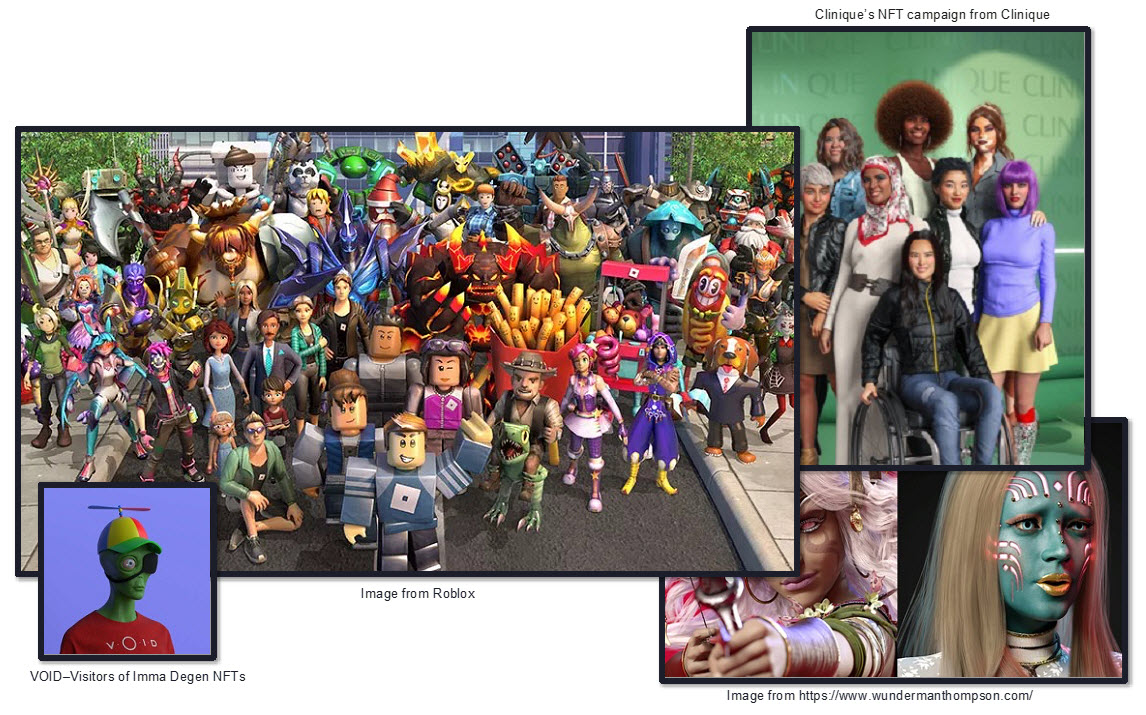
Beyond the technology, the metaverse must be a place where people can connect and interact without bias or discrimination. It’s not just for connecting people similar to each other, but for connecting those who are different.
The decentralization and democratization of the metaverse could allow everyone to share their story in an immersive and interactive way, so that people can “feel” when you tell your story. When I connect with you, I have empathy, and I begin to understand you and feel you as a human being. The metaverse will allow the exploration of the world from a variety of different identities. It can enable you to be seen as you want to be seen and to be perceived as you want to be perceived. All these experiences give rise to tolerance, compassion, relationships, awareness of differences, and appreciation of diversity.
This is the second blog in a three-part series around the evolution of the World Wide Web, how it can become the metaverse, and the networking requirements necessary to support it. See part 1 here: What is Web3 and how does it relate to the metaverse? and part 3 here: Mean-time-to-cloud: Enabling a metaverse-ready network

